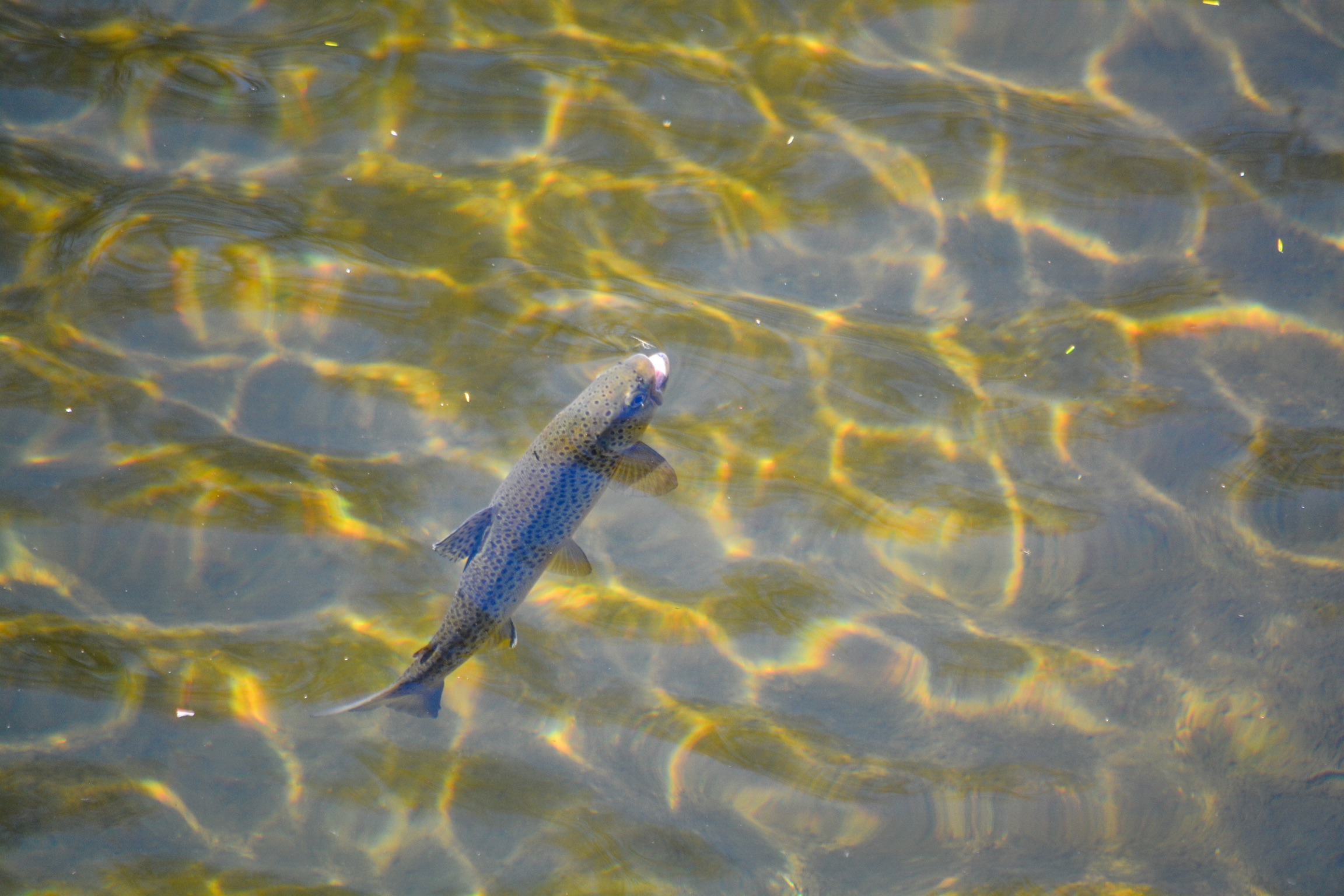Often times the hatches that come earliest in the year are made up of teeny tiny flies like midges or tricos. In my area, these hatches are usually around first and last night, which makes it next to impossible to see your size 24 dry fly floating on the surface. This can get increasingly frustrating as you see and hear trout rising around you feasting on the hatch. During one of those frustrating mornings, a guide friend of mine showed me his secret to telling when your fly has been slurped down by a feeding trout, so I’m here to share it with you!
How to Set Up Your Rig

Essentially this rig is simply a doubly dry-fly rig, first, you’re going to select your flies. The first fly should be your “indicator fly” and the second should be the small dry fly that matches the hatch. Tie your indicator fly to the end of your leader or tippet. Next, take a 12″-18″ section of light mono tippet (I usually stick with 5x-6x), and tie it to the bend in the hook of your indicator fly using a clinch knot. Finally, tie your smaller dry fly to the end of that and you are ready to fish.

How to Fish Your Double Fly Rig
 Simply fish this rig as you would any dry fly. Hatches that consist of smaller flies, typically occur in concentrated areas in eddies or in slower water, so I like to present the smaller fly on the outside of the cluster to avoid spooking any trout below with my larger foam body fly. Since often times it is difficult, if not near impossible, to accurately tell where the smaller fly is, use your indicator fly as on. As soon as you see that fly go under, set hard and reel in that midge slurping trout!
Simply fish this rig as you would any dry fly. Hatches that consist of smaller flies, typically occur in concentrated areas in eddies or in slower water, so I like to present the smaller fly on the outside of the cluster to avoid spooking any trout below with my larger foam body fly. Since often times it is difficult, if not near impossible, to accurately tell where the smaller fly is, use your indicator fly as on. As soon as you see that fly go under, set hard and reel in that midge slurping trout!
https://postflybox.com/blog/2019/03/13/how-to-find-where-your-state-stocks-fish/
https://postflybox.com/blog/2019/03/11/the-5-stages-of-landing-a-monster-fish/
https://postflybox.com/blog/2019/03/08/how-this-tribe-member-is-impacting-his-local-water/

Dan Zazworsky’s passion is sharing his love of fly fishing with anyone that will listen, read or watch. You can find him exploring new waters every day while chasing any fish that will eat a fly!



